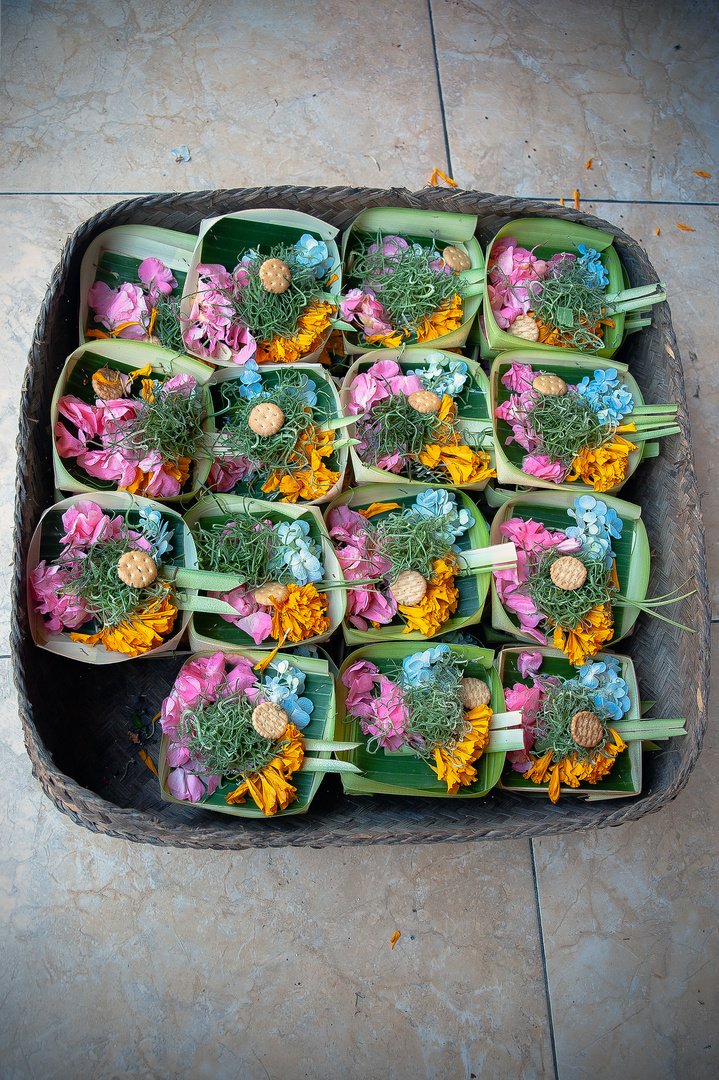Canang Sari ready for sacrifice
The phrase Canang Sari is derived from the Balinese words sari means essence and canang means a small palm-leaf basket as the tray. Canang Sari is the symbol of thankfulness to the Hindu god, Ida Sang Hyang Widhi Wasa. It is offered every day as a form of thanking for the peace had given to the world.
Canang sari normally filled with colorful flowers. Those colors are not randomly chosen; they have different meaning and are placed in specific directions.
White-colored flowers that point to the east as a symbol of Iswara. Iswara is regarded as one of the primary forms of God. He is also known as Shiva or Mahadeva.
Red-colored flowers that point to the south as a symbol of Brahma. Brahma is often referred to as the progenitor or great grandsire of all human beings. Brahm? is traditionally depicted with four heads, four faces, and four arms. Unlike most otherHindu gods, Brahm? holds no weapons. He holds a scepter, a book, a string of prayer beads and the Vedas.
Yellow-colored flowers that point to the west as a symbol of Mahadeva. Mahadeva means “Great god”. The main iconographical attributes of Mahadeva or Shiva are the third eye on his forehead, the snake Vasuki around his neck, the crescent moon adorning, the holy river Ganga flowing from his matted hair, the Trishula as his weapon and the Damaru as his instrument.
Blue or green colored flowers that point to the north as a symbol of Vishnu. Visnu is conceived as “the Preserver” within the Trimurti, the Hindu Trinity of the divinity.












Commentaire 0
Supprimer le commentaire
Effacer commentaire et réponses